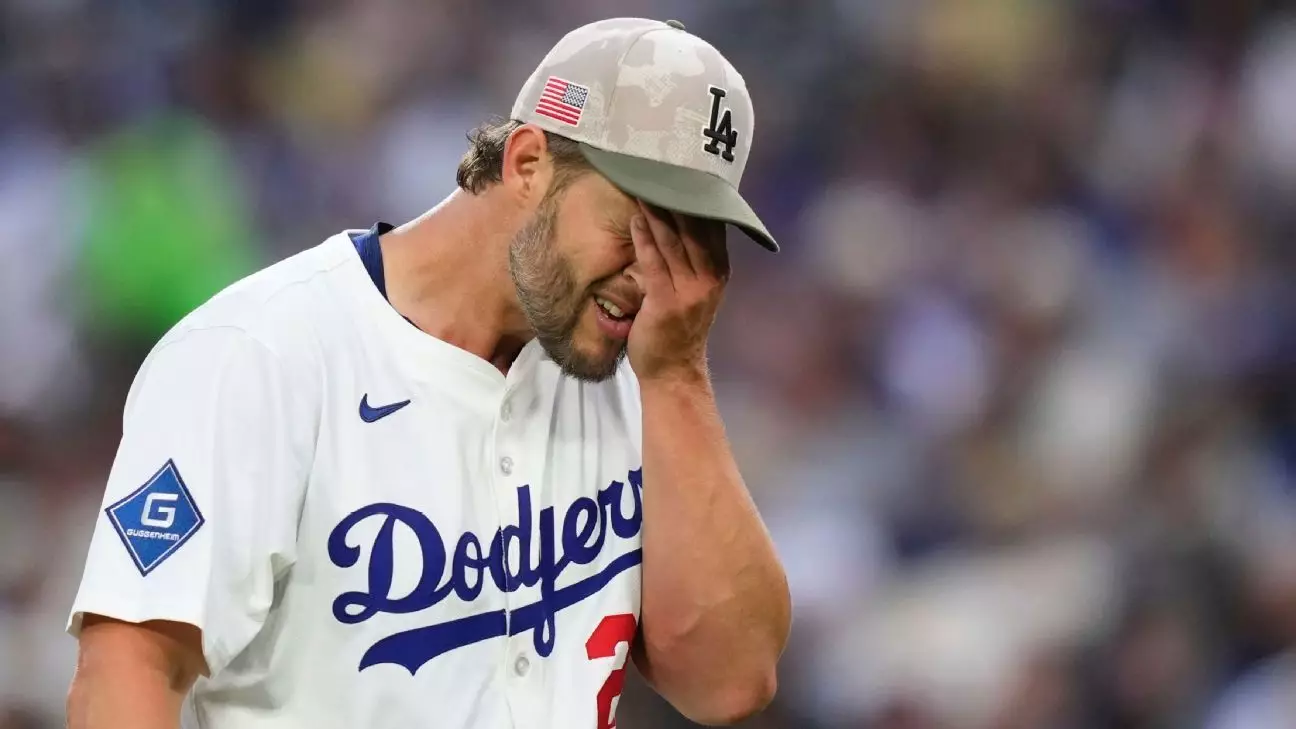The excitement surrounding Clayton Kershaw’s return to Major League Baseball after an extended hiatus due to injuries was palpable among fans and pundits alike. As a three-time Cy Young Award winner and a true icon of the LA Dodgers, Kershaw’s first appearance after nearly nine months sent shockwaves through the baseball community. However, the reality of his performance left many questioning the trajectory of his illustrious career. A tumultuous outing that lasted just four innings, yielding five runs and five hits, seemed more a testament to the challenges of recovery than a celebration of his enduring talent.
In stark contrast to the high expectations set by his starlit past, Kershaw’s performance fell below the standards of his storied career. Though he showcased moments of brilliance with a few well-placed pitches, his inconsistency was alarming. It is worth pondering whether the mental toll of his previous injuries weighed down his usually dominant presence on the mound. With a 48% strike rate and a troubling walk count of three, Kershaw’s return embodied the struggle of transitioning back to peak form after a lengthy absence.
The Elephant in the Room: Command Issues
Kershaw himself acknowledged his command issues during his post-game remarks. “I had really bad command tonight,” he stated candidly, demonstrating a self-awareness that is often lacking among superstar athletes. Acknowledging his difficulties, Kershaw showed a glimpse of his resilience, emphasizing his ability to understand areas for improvement. This maturity and open self-critique, especially from an athlete of his caliber, are what fosters hope in fans and teammates alike.
Manager Dave Roberts also weighed in on Kershaw’s performance, noting, “He got to a lot of two-strike counts and couldn’t put hitters away, where typically that’s his hallmark.” This lack of killer instinct in crucial moments was concerning, as Kershaw tends to thrive under pressure, putting hitters to bed with his signature pitch arsenal.
As Kershaw grapples with reestablishing his dominance, he must confront a harsh truth: the fragility inherent in any athlete’s career, particularly at the age of 37.
Physical Capacity vs. Mental Fortitude
Despite the statistical shortcomings during this particular outing, Kershaw’s declarations of feeling good physically provide a silver lining to an otherwise challenging performance. The back-and-forth between internal confidence and external results is an age-old struggle for athletes returning from injury. The high-stakes environment of Major League Baseball leaves no room for gradual acclimatization; one must produce or risk obscurity.
Kershaw played his last full season, 2022, with a 4.50 ERA, subsequently sidelined due to persistent pain stemming from toe and knee surgeries. His first pitch in the 2025 season may have marked a new beginning for him, but it was also a stark reminder of the physical costs associated with excellence. How can he reconcile these two realities? Balancing physical preparedness with the mental component of reclaiming his status is his next great battle.
A Legacy Under Uncertainty
As fans reflect on the weight of Kershaw’s contributions to the Dodgers and the wider landscape of baseball, they must also contend with the uncertainty that accompanies age and injury. Entering his 18th season, he has already tied the franchise record for longevity shared with Hall of Famers Zack Wheat and Bill Russell. Legacy hangs in the balance for Kershaw, and with every outing, an age-old question reverberates: can he add to that legacy or merely maintain it?
While Kershaw takes on the arduous task of refining his craft amidst ample external pressures, the return from injury can serve as a fertile ground for forging a new identity. Whether he can transcend the whispers of doubt or continue to be a mere shadow of his former self is yet to be seen, but one thing remains clear: a part of the game feels unfamiliar without him, and his fire to thrive is still flickering; it just needs to be reignited.


Leave a Reply